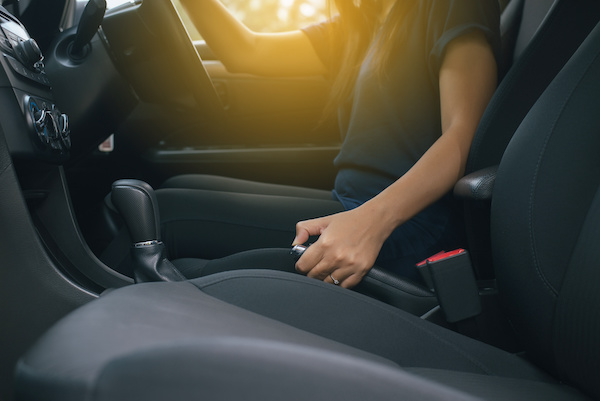
A sign that you're driving with your emergency or parking brake on is that your car won't accelerate properly and you find that your ride is sluggish. You look down to see that you've been driving with the brake on - did you do damage to your car? What happens when you drive with your parking brake on?
If you're the type of driver who always puts their parking or emergency brake up when they park, you may have been in this situation before. It is easy to forget about, and technically your car will still move. The parking or emergency brake is used as a backup in case your regular braking system fails and uses a cable system that locks your rear wheels rather than using your vehicle's hydraulic braking system.
If you have a newer vehicle, you may have an electronic parking brake rather than the standard pull brake typically located in your car's middle console. While your car can still move while the parking brake on, it causes much more friction and will move much more slowly. And truthfully, driving with the emergency brake on can actually do damage to your car.
If you just drive a short distance with the parking brake on, chances are your car is just fine. It's only when you drive longer distances with the parking brake engaged that damage to the braking system parts can occur. Brake pads can be overheated and warm, and the glaze from the pads can transfer on to the rotors. This can lead to an uneven brake rotor surface which can require resurfacing due to a decrease in brake efficiency.
All in all, you don't want to risk damaging your brakes by a silly mistake. Most vehicles have warning lights that will alert you if your parking brake is still on, so be sure to pay attention to your dashboard. And if you need any brake service, bring your car to Roesbery Car Care Walnut Creek today!